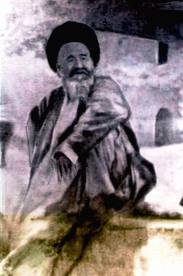ترکمنهای چین
Hytaý Türkmenleri
چین تورکمنلری
ییغنان هم ترجمه ادن: یاشار نیازی / مارقوش ترکمن صحرا
تورکمنلر 400 – 500 ییل موندان اؤنگ خیتایینگ سینتسیان وه گوندوغور تورکستان اطراپیندا یرلهشیپدیرلر. سانلاری 1.5 میلیون توهرِگینده بولاندیغی چأکلنیان تورکمنلر گِییم – گجیم، اگین اشیکدیر دأپ دستورلارینی یاتدان چیقاران هم بولسالار، اؤز دیل لرینی آزدا – کأنده یاشاتماغا چالشیپدیرلار.
خیتایدا یاشایان آز ایلاتلی توپارلار (حالقلار) بویونچا علمی – بارلاغ گچیرن عالملار، سالغور، سالجی، سوولار، ساوغور، سولوک گؤرنوشده دورلی آتلار بیلن یاتلانیلان اوغوزلارینگ «سالیر» طایپاسینا دگیشلی تورکمنلر بولاندیغینینگ ماغلوماتلاری بریلیأر.
حأضیرکی واغتدا سالیر تورکمنلری تورکمنستاندا، تورکیهده، غازاقستاندا، اؤزبکستاندا و اتنیک گلیپ چیقیش شهاداتنامالاری بوزولان گؤرنوشینده قیریمدا (قیریمدا) یاشایارلار.
History
The original Turkmen tribe of “Salor” were first mentioned in the eleventh century by Mahmud al Kashgari and later by Rashidu-‘d-din (fourteenth century) and Abu-‘l-Gazi (seventeenth century). The people originally inhabited an area just outside Samarkand, Uzbekistan. According to legend, they fled that country in the 11th century as a result of persecution by a local king. There are many different versions of the journey the Salar people took to get to Qinghai still told among their people. The basic story is one of two brothers that follow the lead of a camel, while searching for a new homeland. They carry a bag of their native soil, a bottle of native water, and a copy of the Koran with them. They stopped only when the camel drank from a certain pool. That place is now the village of Jiezi in Xunhua County. There is a park at that spot now and a stone camel next to the famous pool. The date of the arrival at Jiezi is said to be in 1370 during the Ming dynasty. After arriving in the Xunhua area, the Salar were governed by their own hereditary tusi, or leader, of whom there were three levels: one in charge of 100 households, and two (a chief and an assistant) for each 1,000 households. They had authority over the militia, taxation, and all legal matters.
There are many other versions of this story, however. In one, the two brothers are named Haraman and Ahman and the king whom they are fleeing is named Galamang. Following the lead of a white camel with a Koran strapped to its head for guidance, the two brothers led a group of Salar people and escaped eastward into China in search of “a land of happiness.” As they migrated across the mountains of central Asia and into what is currently Qinghai province China, one of the Islamic brothers asked Allah to guide them to the place where they should make their new home. That night the brother had a vivid dream of a beautiful waterfall and the next day the camel-led expedition came to that same waterfall. The camel stopped to drink the water there in Xunhua county and turned into a white stone at that very spot.
Zhang Weiwan’s version of the story has Galamang as one of the brothers fleeing Samarkand because he was framed for killing another tribe’ s livestock. Joined by eighteen people of his tribe, he sets off eastward with another group of forty-five friends and neighbors following behind. Galamang and his group went north of the Tianshan Mountains while the group following went south of them, but both groups met at Ganjiatan in Gansu Province. They continued following the camel over Mengda Mountain until they reached Tangfangzhuang in Xunhua. That night the camel went missing and when they found it the next day it had been turned to stone next to the pool just east of Jiezi.



